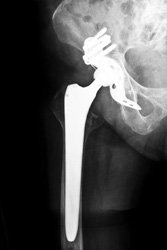Safer and more durable hip implants
An unsatisfactory proportion of prosthetics implanted during conventional total hip replacement (THR) fails within the first 16 to 20 years. An orthopedic consultant may recommend a procedure called hip resurfacing, rather than a (THR) for more active patients whose bones are of good quality, allowing greater preservation of natural bone in and around the joint and providing greater durability. This involves replacing the damaged or diseased surface of the ball and socket joint in the hip with highly polished metallic capping, known as metal on metal (MoM) hip resurfacing. However, reports of high blood and serum levels of cobalt and chromium in patients with MoM devices have raised important concerns about their long-term effects. EU-funded scientists set out to develop an improved hip prosthesis using high-performance ceramics with high compressive strength, wear resistance and chemical inertness. The project 'Enhanced durability resurfacing endoprosthesis' (ENDURE) set the ambitious goal of a prosthetic lifetime in excess of thirty years. In order to arrive at the ceramic-on-polymer resurfacing hip prosthesis, researchers focused on alumina matrix composite bioceramics and carbon fibre-reinforced poly–ether–ether–ketone. They developed new cost-effective polymer-processing methods and employed extensive theoretical and experimental testing to arrive at the final designs. The system and its implantation were successfully tested and demonstrated by specialised surgeons working on cadavers. Preliminary publication of results on the project website has led to a flurry of inquiries and expressed interest, providing the impetus for expediting the clinical trials process. Commercialisation will be of great importance to the EU economy and the competitive position of its small and medium-sized enterprises working in the field. Reduction in revisional surgeries will also enable tremendous savings for the health system and, of course, significantly enhanced quality of life for the many hip replacement patients of every age.







